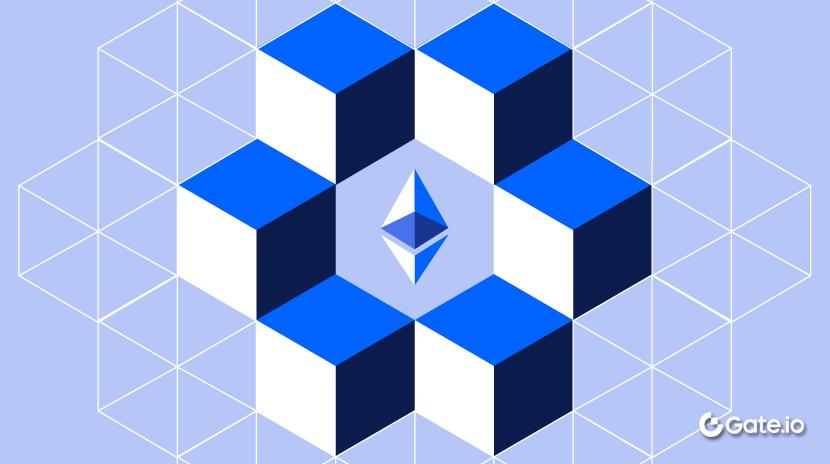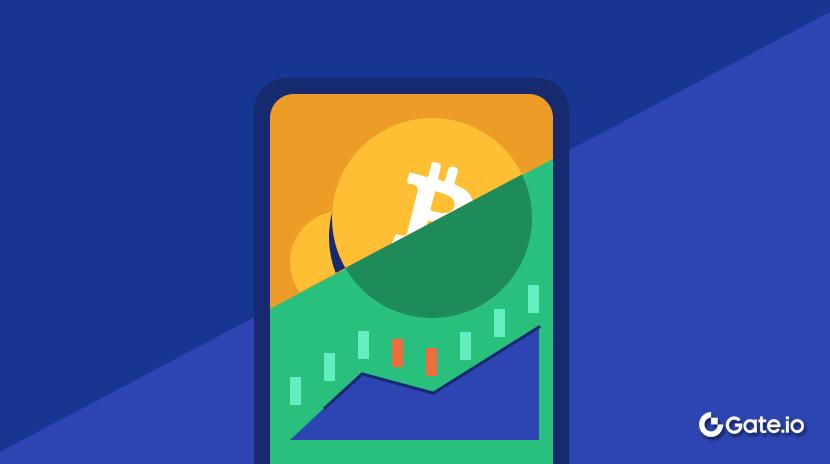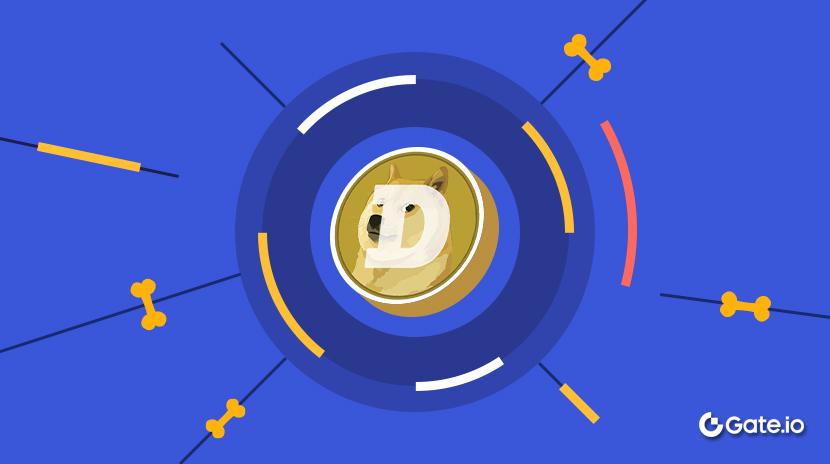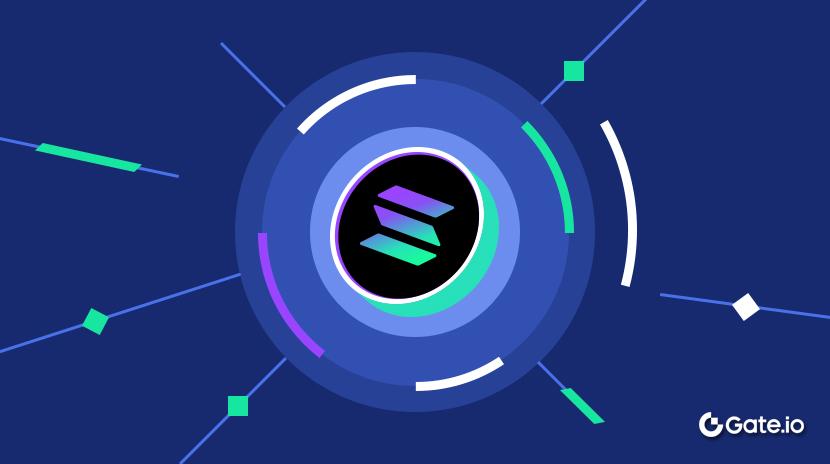Pesquisa Gate: Vitalik Revela Ethereum L2 Roadmap de Segurança; Usuários On-Chain da Solana Batem Recorde de 11,12 Milhões
Resumo
- O preço do Bitcoin caiu 1,75% para $81.631, enquanto o preço do Ethereum caiu 1,79% para $1.803.
- O número de endereços Solana que possuem mais de 0.1 SOL ultrapassou 11.12 milhões, atingindo uma alta recorde.
- O volume de negociação acumulado do Uniswap v4 ultrapassou US$ 2,7 bilhões.
- Vitalik lançou o roteiro de segurança da camada 2 da Ethereum.
- O volume diário de negociação de criptomoedas caiu quase 70% desde a eleição nos EUA.
- A pressão regulatória global está diminuindo, com 47 países tendo relaxado as regulamentações criptográficas desde 2020.
Análise de mercado
- BTC — O preço do Bitcoin caiu 1,75% nas últimas 24 horas, atualmente em $81.631 às 12:00 PM (UTC+8). No geral, o BTC permanece em tendência de baixa com desempenho fraco no curto prazo, pairando perto do nível de suporte chave de $81.500. Desde o pico recente, o preço tem declinado consistentemente e está limitado por uma linha de tendência descendente. Cada recuperação tem sido limitada por máximas mais baixas, indicando forte pressão baixista no mercado. [1]

- ETH- O preço do ETH caiu 1,79% nas últimas 24 horas, atualmente em $1.803 às 12:00 PM (UTC+8). Recentemente, o ETH tem oscilado dentro de um canal descendente, com várias tentativas de recuperação falhando no limite superior - indicando que os ursos permanecem no controle. Atualmente, está buscando suporte em torno de $1.780; se este nível não se mantiver, pode surgir mais riscos de queda.

- ETFDe acordo com dados da SoSoValue, os ETFs de Bitcoin à vista dos EUA registraram uma saída líquida total de $93.16 milhões em 28 de março, enquanto os ETFs de Ethereum à vista dos EUA registraram uma entrada líquida de $4.68 milhões. Dados às 12:00 (UTC+8) em 31 de março.
- Altcoins — As altcoins têm mostrado um desempenho geral fraco recentemente, com recuos generalizados em quase todos os setores nas últimas 24 horas. Há uma falta de influxos de capital significativos, indicando um sentimento de mercado cauteloso. A curto prazo, as altcoins ainda estão sob pressão. Os setores relativamente resilientes incluem Bitcoin Sidechains, Bridge-Tokens e Pump.fun Ecosystem, que subiram respectivamente 3,2%, 2,7% e 2,2%. [5]
- Índices do Mercado de Ações dos EUAEm 28 de março, o S&P 500 caiu 1,97%, o Dow Jones caiu 1,69% e o Nasdaq caiu 2,70%. [6]
- Ouro à vista— O preço do ouro à vista atingiu $3,106 por onça, subindo 0.74% no dia. Dados até 12:00 PM (UTC+8) em 31 de março. [7]
- Índice de Medo e Ganância — O Índice de Medo e Ganância está em 34, indicando um estado de medo no mercado. [8]
Melhores Desempenhos
De acordo com os dados de mercado da Gate.io[9], as altcoins com melhor desempenho nas últimas 24 horas, com base no volume de negociação e movimento de preços, são as seguintes:

ALCH (Alchemist AI) — Aproximadamente 11,59% acima no último dia, com uma capitalização de mercado circulante de $56,5 milhões.
Alchemist AI é uma plataforma de desenvolvimento sem código alimentada por inteligência artificial. Através de prompts de linguagem natural, os usuários podem gerar aplicativos de software totalmente funcionais. A plataforma integra NLP, geração de código, frameworks da web e APIs de SO para converter texto em programas executáveis, reduzindo a barreira técnica tanto para desenvolvedores quanto para usuários não técnicos.
Em 29 de março, o aplicativo Alchemist AI foi lançado na Google Play Store, expandindo a acessibilidade do usuário e sua base potencial de usuários. A implementação aumentou a confiança dos investidores nas perspectivas de crescimento do projeto, impulsionando o preço do token ALCH para cima. [10]
REZ (Renzo) — Ganhou aproximadamente 30,85% nas últimas 24 horas, com uma capitalização de mercado circulante de $39,63 milhões.
Renzo é um protocolo de restaking líquido construído no Ethereum que se integra com a EigenLayer para oferecer recompensas de restaking. Os usuários podem apostar ETH e receber ezETH, um ativo negociável que mantém liquidez enquanto gera rendimentos. O protocolo possui estratégias integradas para otimizar retornos.
O recente rally de preços da REZ é amplamente impulsionado por desenvolvimentos técnicos e ecossistêmicos. Estes incluem a cunhagem nativa de ezETH com baixo gás na Arbitrum e integrações com plataformas DeFi como Compound e SparkLend. Tais expansões aprimoram sua utilidade em empréstimos, colateralização e agricultura de rendimento, aumentando a visibilidade e tração de mercado.
MOZ (Lumoz)— Aumentou aproximadamente 14,98% nas últimas 24 horas, com um limite de mercado circulante de $14,5 milhões.
Lumoz é uma plataforma descentralizada de ZK-RaaS (Zero-Knowledge Rollup-as-a-Service) destinada a simplificar e acelerar a implementação de soluções de blockchain baseadas em rollup, ao mesmo tempo que suporta cargas de trabalho de IA. Ele introduz um mecanismo de ZK-PoW (Prova de Trabalho de Zero-Knowledge) para incentivar os mineradores a fornecer energia computacional ZKP, abordando desafios de desempenho e descentralização em ZK-Rollups.
Os desenvolvimentos recentes incluem uma campanha de distribuição de tokens esMOZ em parceria com a UXLINK, que impulsionou o envolvimento e a demanda dos usuários. Além disso, a Lumoz anunciou uma colaboração com a Epal Labs para integrar a IA descentralizada e a tecnologia ZK, abrindo novas possibilidades para jogos de blockchain alimentados por IA. Essas ações fortaleceram o sentimento de mercado e ajudaram a elevar os preços do MOZ.
Destaque de Dados
Os usuários ativos on-chain da Solana continuam atingindo recordes, endereços com mais de 0,1 SOL ultrapassam 11,12 milhões
Até 30 de março, o número de endereços na rede Solana com mais de 0,1 SOL ultrapassou 11,12 milhões, atingindo uma alta recorde. Ao contrário das métricas simples de contagem de endereços, esse número oferece uma visão mais realista da participação ativa do usuário, sugerindo que um número crescente de usuários está mantendo um certo nível de alocação de capital na Solana.
Apesar de um arrefecimento mais amplo no mercado de criptomoedas - com volumes de negociação mais baixos e volatilidade reduzida - a rede base da Solana continua seu crescimento constante. O aumento no número de endereços qualificados indica que alguns usuários estão segurando seus ativos mesmo durante a consolidação do mercado, demonstrando confiança sustentada no potencial de longo prazo da Solana. À medida que a rede continua a demonstrar forte desempenho e eficiência de custos, seus fundamentos em melhoria estão estabelecendo uma base sólida para a atividade futura do ecossistema e um possível ressurgimento do sentimento de mercado.
Volume de negociação acumulado do Uniswap v4 ultrapassa US$ 2,7 bilhões
Até 30 de março, a Uniswap v4 superou US$ 2,7 bilhões em volume total de negociação desde o seu lançamento em 30 de janeiro, refletindo uma forte tração sob a sua nova arquitetura. A maior parte da atividade de negociação provém de quatro redes: mainnet Ethereum, Arbitrum, Base e BNB Chain, destacando a eficácia da estratégia de implementação multi-cadeia da Uniswap.
Uniswap v4 introduz um sistema de ganchos mais flexível juntamente com otimizações na eficiência de gás e gestão de liquidez, atraindo uma ampla gama de desenvolvedores e provedores de liquidez profissionais (LPs) para participar da implantação e teste. Redes de camada 2 como Base e Arbitrum, com suas capacidades de alto desempenho, forneceram um forte suporte para o volume de transações do v4 e aumentaram sua escalabilidade entre as cadeias.
No entanto, devido à implementação mais lenta do v4, o Uniswap v3 permanece a versão dominante por enquanto. Sua implantação contínua em redes como Arbitrum e Polygon ajudou a melhorar o desempenho e a experiência do usuário, reforçando a liderança do Uniswap no espaço DEX. No curto prazo, espera-se que o v3 permaneça a espinha dorsal das operações de negociação principais, garantindo a funcionalidade estável do ecossistema e pavimentando o caminho para a adoção do v4. [12] [13]
Volume de negociação diário de criptomoedas cai quase 70% desde a eleição nos EUA, capitalização de mercado cai mais de 30%
Após as eleições nos EUA, o mercado de criptomoedas teve uma forte recuperação, com o volume diário de negociação atingindo brevemente cerca de US$ 126 bilhões, à medida que o otimismo dos investidores aumentou em resposta à redução da incerteza política e à perspectiva de mudanças favoráveis nas políticas. No entanto, à medida que o entusiasmo diminuiu, o volume diário atual caiu acentuadamente para aproximadamente US$ 35 bilhões - uma queda de quase 70% - trazendo-o de volta aos níveis pré-eleitorais.
Paralelamente, a capitalização total do mercado de criptomoedas também diminuiu significativamente, caindo de um pico de cerca de US $ 3,9 trilhões para o nível atual de aproximadamente US $ 2,7 trilhões. Essa redução de US $ 1,2 trilhão representa uma queda de 30%, indicando saídas de capital notáveis e enfraquecimento da confiança do investidor.
A queda simultânea tanto no volume de negociação quanto no valor de mercado reflete uma mudança generalizada no sentimento dos investidores após o rali pós-eleição. Muitos participantes optaram por realizar lucros, enquanto o apetite geral por risco diminuiu. Com a direção da política do Federal Reserve ainda incerta, o capital permanece em modo de espera, levando a um ambiente de mercado mais cauteloso, pois os participantes procuram sinais mais claros para impulsionar o próximo movimento importante.
Análise em Destaque
Vitalik revela o roteiro de segurança da camada 2 do Ethereum focado em escalabilidade, mecanismos de prova e unificação
Em 29 de março, o co-fundador da Ethereum, Vitalik Buterin, lançouUm simples roteiro de segurança L2 e finalização, delineando três direções-chave para melhorar a segurança e finalidade das redes de Camada 2 do Ethereum. O objetivo é ajudar o ecossistema do Ethereum a escalar de forma mais eficiente, reduzindo as suposições de confiança.
A próxima atualização do Pectra expandirá o armazenamento de Blob, e a atualização Fusaka ainda este ano aumentará ainda mais a capacidade. Enquanto isso, os avanços na tecnologia ZK-EVM estão reduzindo significativamente os tempos de finalização. Olhando para o futuro, o roadmap foca em expandir ainda mais o espaço de Blob, introduzir mecanismos de prova híbridos e construir uma camada unificada de agregação de prova ZK. O objetivo é aprimorar o desempenho e a segurança, reduzir a dependência de um único caminho tecnológico e cortar os custos de gás.
Este roteiro fornece orientações claras para dimensionar e minimizar a confiança dos Ethereum L2s. À medida que a demanda por transações on-chain e interações cross-chain cresce, soluções como escalonamento de Blob e sistemas de prova unificados serão críticas para melhorar a experiência do usuário e acelerar a maturidade do ecossistema. Com a melhoria da infraestrutura, os L2s estão prontos para entrar em uma nova fase de alta taxa de transferência e baixa latência. [15]
Regulamentação Global de Criptomoedas Facilita à medida que 47 Países Flexibilizam as Políticas Desde 2020
Desde 2020, as regulamentações globais de criptomoedas passaram por mudanças notáveis. Os dados mostram que 47 países facilitaram ou simplificaram proativamente as políticas relacionadas a criptomoedas em áreas como negociação, posse, relatórios fiscais, emissão de ICO e mineração. Isso reflete uma crescente vontade global de abraçar a classe de ativos emergente. Em contraste, apenas quatro países moveram-se para restringir as restrições durante o mesmo período, com alguns implementando proibições totais na negociação e mineração de criptomoedas. Esse contraste acentuado destaca a tendência mais ampla em direção à abertura, inclusividade e conformidade.
Regulamentações mais frouxas não só afetam o fluxo de capital, mas também influenciam a estrutura da indústria e o desenvolvimento tecnológico. A crescente flexibilidade regulatória sugere que as finanças tradicionais e o ecossistema de criptomoedas estão caminhando para uma integração mais profunda. Isso também abre mais espaço para startups da Web3, serviços financeiros de criptomoedas e aplicativos on-chain. Enquanto alguns países permanecem cautelosos, a tendência predominante está se movendo em direção a uma aceitação condicional - um movimento que poderia fortalecer a confiança do mercado e atrair mais players institucionais. [16]
Four.Meme para Migrar para PancakeSwap V2
Em 30 de março, a plataforma de lançamento de memecoin Four.Meme anunciou uma atualização de plataforma futura programada para 31 de março (horário exato a ser determinado), que envolverá a migração de liquidez para o PancakeSwap V2. Notavelmente, a equipe também afirmou que todos os tokens recém-lançados terão suas pools de liquidez (LP) queimadas imediatamente após o lançamento.
Essa mudança sinaliza uma mudança na estratégia de gestão de liquidez do Four.Meme, com o objetivo de aumentar a transparência e reduzir o risco de manipulação de preços pelas equipes de projeto. O mecanismo de queima de LP é projetado para promover uma maior confiança da comunidade na justiça e descentralização dos lançamentos de tokens.
Em meio a um sentimento de mercado cauteloso e uma demanda crescente por transparência e segurança nos projetos, este modelo de queima de LP pode fortalecer a credibilidade da Four.Meme no setor de memes. Também poderia ajudar a aliviar as preocupações sobre comportamentos de pump-and-dump de curto prazo e atrair detentores com uma perspectiva de longo prazo. Com o PancakeSwap V2 ganhando tração e vantagens de liquidez, a migração poderia estabelecer uma base mais forte para o desenvolvimento futuro da Four.Meme.
Oportunidade de Airdrop
Rede de Forma
Shape Network é uma blockchain de camada 2 do Ethereum impulsionada pela cultura, projetada para capacitar criadores a transformar arte digital, colecionáveis e trabalhos experimentais em NFTs permanentemente preservados, enquanto constroem seu próprio legado digital dentro de um ecossistema descentralizado. Ao simplificar o processo de cunhagem e oferecer suporte on-chain, a Shape Network tem como objetivo estabelecer um espaço cultural sustentável de longo prazo para os criadores.
O token SHAPE é usado para recompensar participantes ativos e garantir que os criadores recebam reconhecimento e compensação contínua. A Shape Network está atualmente executando uma campanha de airdrop de token SHAPE em grande escala. Os usuários podem se qualificar cunhando "Pilhas", ganhando emblemas para construir reputação on-chain e convidando amigos. O airdrop representa 10% do fornecimento total de tokens.
Como Participar:
- Visite o site oficial da Shape Network e conecte sua carteira Ethereum.
- Cunhar uma Pilha de Formas.
- Siga os canais sociais oficiais da Shape Network e junte-se à comunidade para completar tarefas e ganhar distintivos.
Nota:
Detalhes do airdrop e métodos de participação podem mudar a qualquer momento. Os usuários são aconselhados a se manterem atualizados através dos canais oficiais da Shape Network. Por favor, tenha cautela e conduza uma pesquisa minuciosa antes de participar. Gate.io não garante a distribuição futura das recompensas do airdrop.
Referência:
- Gate.https://www.gate.io/trade/BTC_USDT
- Gate.io,https://www.gate.io/trade/ETH_USDT
- SoSoValue,https://sosovalue.xyz/assets/etf/us-btc-spot
- SoSoValue,https://sosovalue.xyz/assets/etf/us-eth-spot
- CoinGecko,https://www.coingecko.com/pt/categories
- Investir,https://investing.com/indices/usa-indices
- Investindo,https://investing.com/currencies/xau-usd
- Gate.io,https://www.gate.io/bigdata
- Gate.io,https://www.gate.io/price
- X,https://x.com/alchemistAIapp/status/1905703388014313812
- Glassnode,https://studio.glassnode.com/charts/addresses.NonZeroCount?a=SOL&chartStyle=line&mScl=lin&pScl=lin
- X,https://x.com/Uniswap/status/1905634254249144738
- Dune,https://dune.com/uniswap_fnd/v4-launch-metrics-tracker
- O Bloco,https://www.theblock.co/data/crypto-markets/spot/total-exchange-volume-daily
- X,https://x.com/VitalikButerin/status/1905733092662505586
- X,https://x.com/Cointelegraph/status/1906512011002777657
- X,https://x.com/fourmeme/status/1906200891092586611
- Rede Shape,https://shape.network/
- Rede Shape, https://shape.network/
Pesquisa Gate
A Gate Research é uma plataforma abrangente de pesquisa em blockchain e criptografia que fornece aos leitores conteúdo detalhado, incluindo análise técnica, insights quentes, revisões de mercado, pesquisa da indústria, previsões de tendências e análise de políticas macroeconômicas.
Clique no botão Link para saber mais
Aviso Legal
Investir no mercado de criptomoedas envolve alto risco, e é recomendável que os usuários conduzam pesquisas independentes e compreendam completamente a natureza dos ativos e produtos que estão adquirindo antes de tomar qualquer decisão de investimento. Gate.io não é responsável por quaisquer perdas ou danos causados por tais decisões de investimento.
Artigos Relacionados

Como fazer suas próprias pesquisas (DYOR)?

Como apostar ETH?

O que é Análise Fundamentalista?

O que é Análise técnica?

O que é Dogecoin?
